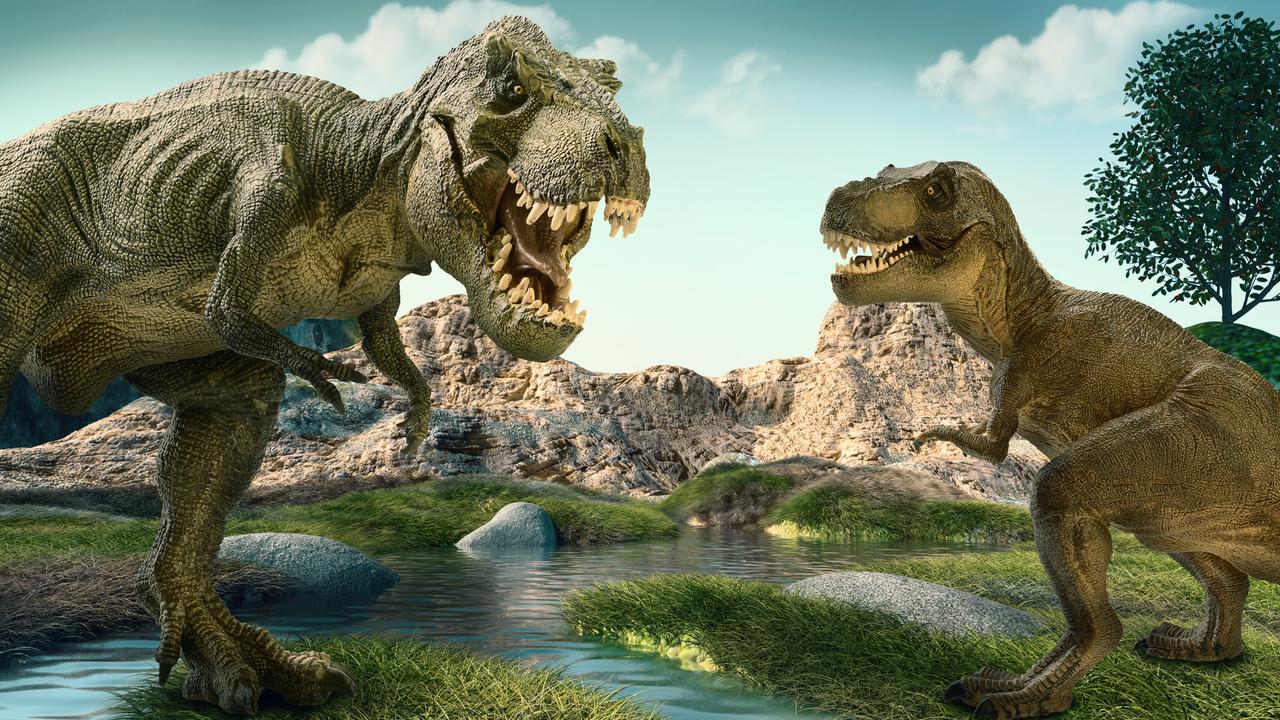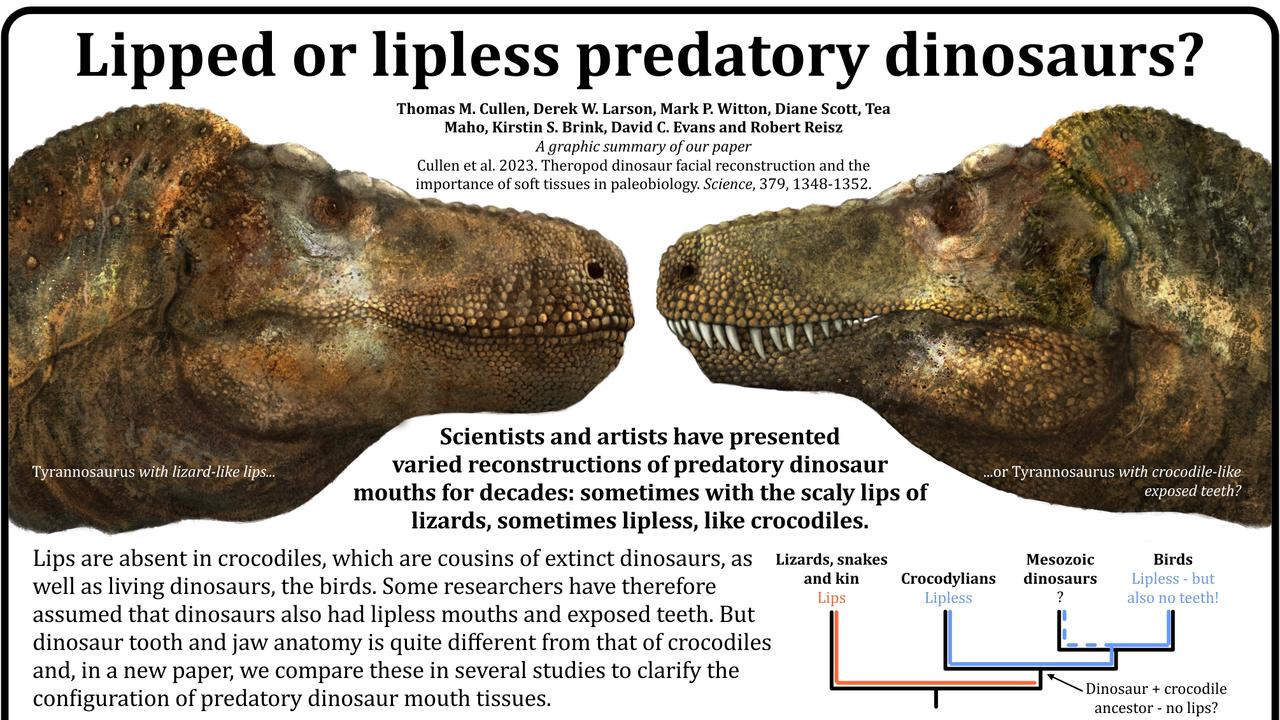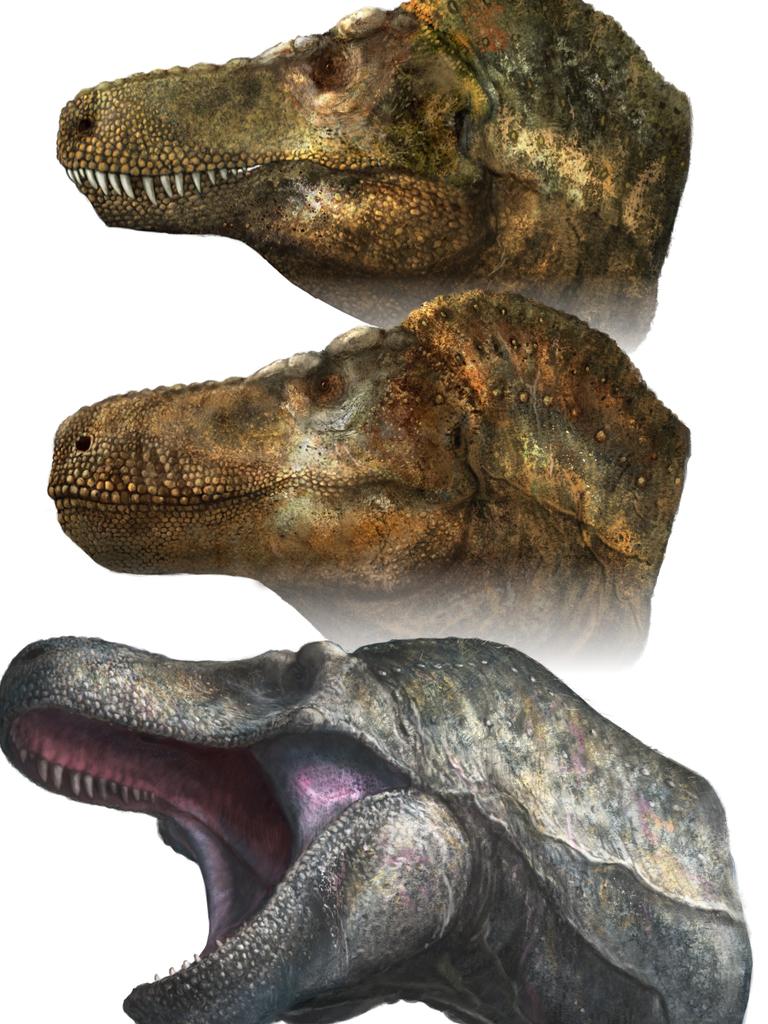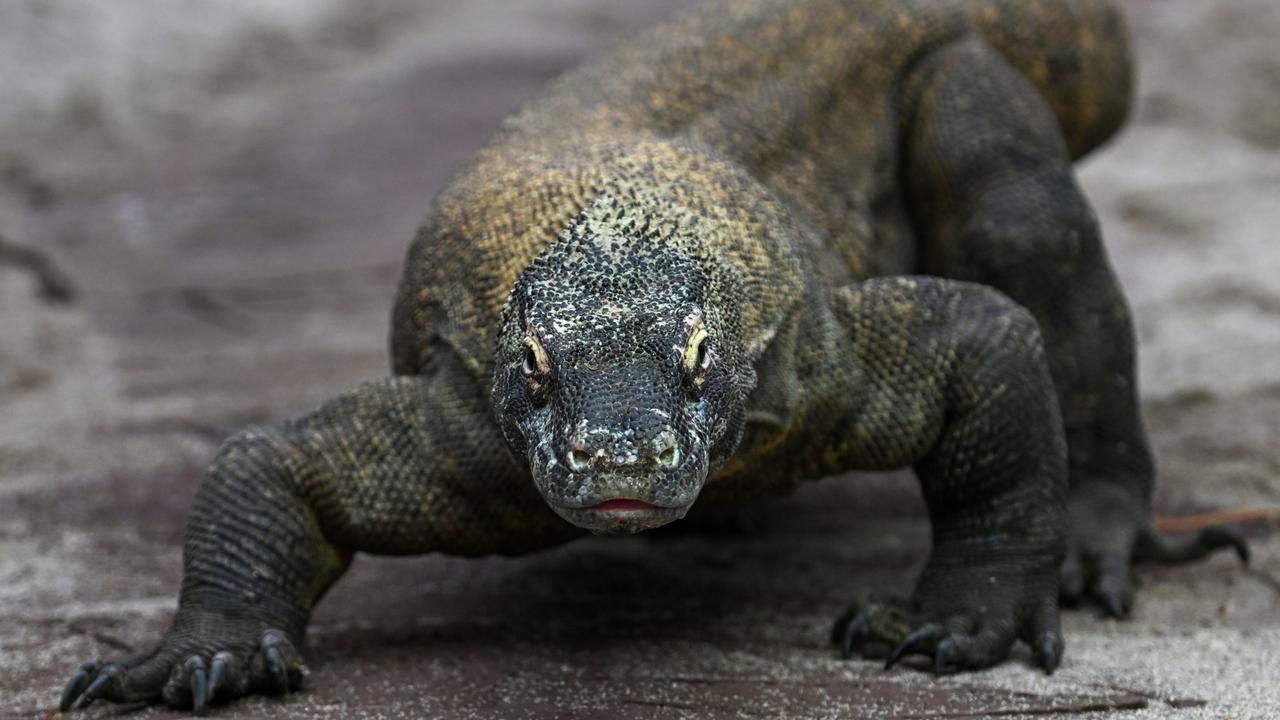Terrifying T-rex teeth tucked behind scaly lips, new research finds
The classic image of the Tyrannosaurus rex baring its teeth has been thrown into doubt by new research that found the dinosaur had scaly lips that hid its razor sharp chompers

READING LEVEL: GREEN
The Tyrannosaurus rex is often shown baring* massive, sharp teeth, like the ferocious* creature in the movie Jurassic Park. But new research suggests this classic image might be wrong.
The teeth on T-rex and other big theropods* were likely covered by scaly lips, a new international study has found.
The study, published in the journal Science, found the dinosaur’s teeth didn’t stick out when its mouth was closed, and even in a wide open bite, you might just see the tips.
The research is the latest in a long back-and-forth debate over how dinosaur mouths really looked.
Recent depictions* show big teeth jutting out of the dinosaurs’ jaws, even when closed.

Study author Thomas Cullen, a palaeontologist* at Auburn University in the US, said some experts believed the predators’* teeth were just too big to fit in their mouths.
But when the researchers compared skulls from dinosaurs and living reptiles in this latest study, they found this wasn’t the case.
Assistant Professor Cullen said some of today’s large monitor lizards actually had bigger teeth than T-rex compared to their skull size, and could still fit them under their scaly lips.

The scientists also found clues in the pattern of wear and tear on tooth surfaces.
For a creature like a crocodile, whose teeth stick out of its mouth, the exposed* part gets worn down quickly — “like someone’s taken a sander to the side of the tooth,” said study co-author Mark Witton, from England’s University of Portsmouth.
But when the researchers analysed a tooth from a Daspletosaurus, a relative of T-rex, they found it was in good condition and didn’t show that uneven damage pattern.
With this evidence and other clues from the dinosaurs’ anatomy*, the study makes a good case for lipped tyrannosaurs, said University of Maryland palaeontologist Thomas Holtz, who was not involved with the study.
Still, “we’re not talking kissy lips,” he pointed out – they’d be thin and scaly like those of the Komodo dragon, the largest and heaviest lizard on Earth today.

It’s not the first time our depictions of dinosaurs have been called into question. Other research has shown that T-rex was more hunched over than we used to think, and that fierce velociraptors probably had feathers.
Most of what we know about dinosaurs comes from their bones, but it can be harder to get clear answers about soft tissues, like skin, which usually aren’t preserved as fossils.
Adding lips might make dinosaurs look a little less ferocious, but it also made them feel more realistic, Dr Witton said.
“You don’t really see a monster, you see an animal,” he said.
GLOSSARY
- baring: uncovering and showing
- ferocious: very fierce, frightening and violent
- theropods: a group of meat eating dinosaurs that typically walked on two legs
- depictions: how something is represented or shown
- palaeontologist: scientist who studies fossils
- predators: animals that naturally hunts and eats other animals
- exposed: able to be seen, uncovered
- anatomy: to do with the body and how its parts are arranged
EXTRA READING
67 million-year-old T-rex for sale
T-rex eye evolved for bigger bite
T-rex reigns as king of dinosaurs
QUICK QUIZ
- Why do some experts believe T-rex’s teeth jutted out of its mouth?
- How did the researchers decide this could not be the case?
- Which lizard is the largest and heaviest on Earth today?
- What did other research find about the way T-rex stood?
- What did other research find about velociraptors?
LISTEN TO THIS STORY
CLASSROOM ACTIVITIES
1. T-rex caricature
With this new information about how the T-rex’s teeth might have actually looked, draw a caricature of a T-rex outlining this feature.
A caricature is a drawing that makes someone or something look funny or foolish because some part of the person’s or creature’s appearance is exaggerated. The exaggerated feature in your caricature would be its lips.
Share your drawing with some classmates.
Time: allow 30 minutes to complete this activity
Curriculum Links: Visual Arts
2. Extension
Why do you think the study of dinosaurs and prehistoric animals (palaeontology) is still studied and researched today?
What questions do you have about dinosaurs that roamed the Earth?
Time: allow 10 minutes to complete this activity
Curriculum Links: English, Science, Critical and Creative thinking
VCOP ACTIVITY
Choose a dinosaur. Now draw the dinosaur’s head with scaly lips instead of the usual depiction of teeth sticking out.
Cut out the head and glue or tape it onto a separate sheet of paper.
Now write a short paragraph about your new and improved dinosaur, including its name, habitat, diet and any special features you imagine it might have.
Extension: Share your new dinosaur with the class and explain why you chose the features you did.
This activity encourages creativity and imagination while also reinforcing the idea that our understanding of dinosaurs is constantly evolving based on new scientific research.

